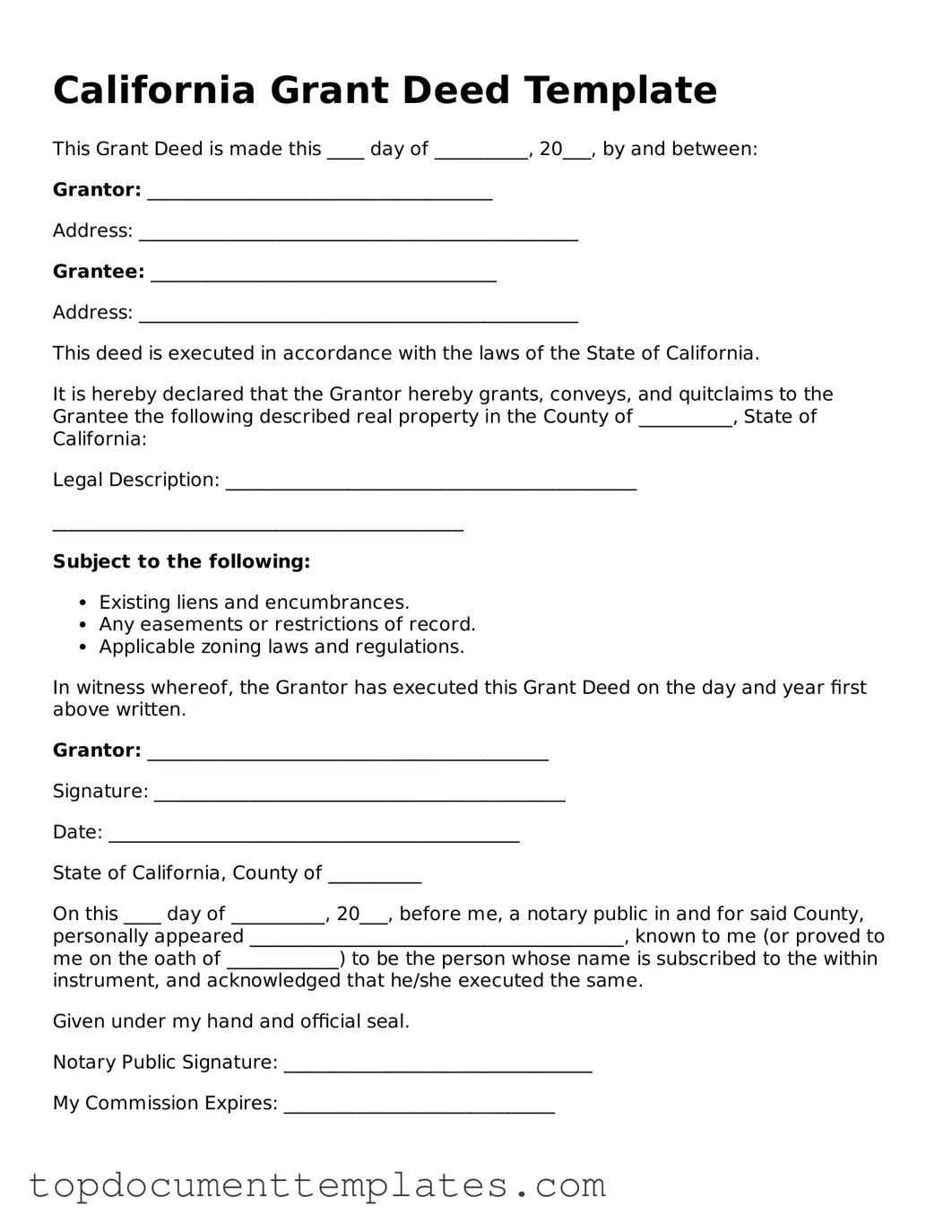The California Deed form is a crucial legal document used in real estate transactions to transfer property ownership from one party to another. This form serves various purposes, including granting, conveying, or releasing interests in real property. It typically includes essential information such as the names of the grantor (the seller) and grantee (the buyer), a legal description of the property, and the date of transfer. Depending on the type of deed—whether it is a grant deed, quitclaim deed, or warranty deed—certain warranties and guarantees regarding the property’s title may also be outlined. Additionally, the form must be signed by the grantor and notarized to ensure its validity. Understanding the specific requirements and implications of the California Deed form is vital for anyone involved in a property transaction, as it not only affects ownership rights but also impacts future dealings with the property.
